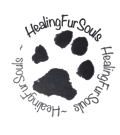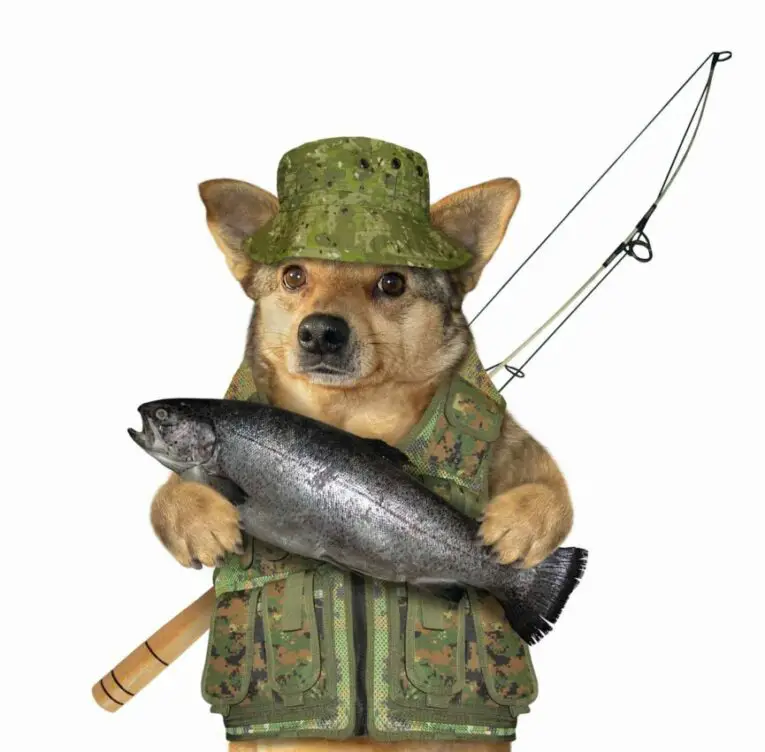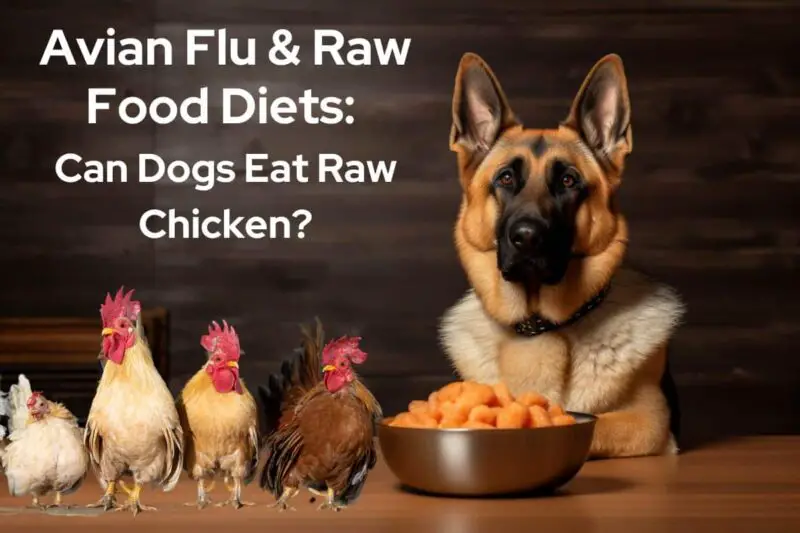Can Dogs Eat Salmon Skin?
(Healthy Recipes Included)
Dogs can eat boiled, poached, baked, fried, dehydrated or previously frozen raw salmon skin. Choose wild-caught salmon to minimize toxins, and cut skin into small pieces to prevent choking. Nutritious, homemade salmon recipes include healing herbs to help senior dogs and those with arthritis, inflammation, and chronic infections.
The most important things to know if you want to add salmon skin to your dog’s diet are:
- Cook or thaw previously frozen salmon
- Never give a dog freshly caught, raw salmon skin or flesh
- Always cut fish skin into small pieces
- Add healing herbs to your dog’s salmon to help joints, skin and inflammation
- Choose wild-caught or sustainably-raised salmon
Is Salmon Skin Safe for Dogs?
Cooked or previously frozen salmon skin is safe and nutritious for dogs to eat. Scrape off any large scales and cut skin into small bites to prevent choking. Don’t let your dog eat freshly-caught salmon due to higher risks for parasites. Choose wild-caught salmon and avoid farmed fish with their higher levels of bacteria, disease and medications.
Can Dogs Eat Raw, Freshly Caught Salmon?

Do you fish for salmon? Or enjoy fresh salmon from the fish market? Maybe your dog is like ours and loves to look for fish while swimming in local lakes!
Don’t be tempted to reward your dog with a bite of freshly caught salmon! There are three reasons you should never allow your dog to eat fresh, raw salmon.
Three Reasons Dogs Shouldn’t Eat Freshly Caught, Raw Salmon
Bacteria and Parasites
Salmon skin is covered in mucous that often harbours bacteria, parasites and sea lice. Stress, antibiotics and handling can further impact the healthy microbiome of a salmon’s skin, leading to growth of opportunist, harmful bacteria. Freshly caught salmon exposes your dog to potentially harmful infections.
Salmon Poisoning Disease
This is a rare but fatal disease for dogs that eat fresh, raw salmon from the Pacific Northwest. Some Pacific salmon carry a bacteria-harbouring tapeworm that dogs are susceptible to. Freshly caught raw or undercooked salmon can carry this parasite and make a dog very, very sick.
Fish Bones
Salmon has soft tiny bones (cartilage) that can lodge in a dog’s throat causing choking or internal injuries.
Is It Safe for Dogs on a Raw Food Diet to Eat Salmon?
A raw food diet is among the most nutrient-rich natural diets for dogs. When processed correctly by reputable raw dog food manufacturers, raw salmon is safe and highly nutritious. Raw salmon that are processed and sold for dogs’ meals are flash frozen for a period of time long enough to kill any bacteria or parasites that may be present. In addition, raw dog food producers grind bones, muscle meats, skin, scales and organs to eliminate any choking risk.
Can Dogs Eat Raw Salmon That’s Been Frozen and Thawed?
If you’ve caught a salmon or purchased one freshly caught, it’s wise to debone and freeze the filets. Salmon that has been frozen for at least two weeks can then be thawed and offered to dogs. Just make sure the fish is boneless or finely grind the flesh, skin, large scales and bones before feeding.
Can Dogs Eat Cooked Salmon Skin?
Salmon skin is a healthy treat for dogs, and cooking salmon makes it easier for senior or ill dogs to digest. Skin is filled with omega-3 oils and collagen for healthy joints and skin, making this an excellent choice for dogs prone to arthritis, joint pain or skin infections (hot spots). Just make sure you cut skin into small pieces to reduce the risk of choking.
Much of the world’s supply of salmon has been contaminated by environmental/industrial pollution, so purchase wild-caught salmon where possible to reduce the amount of toxins and bacteria on the skin. Toxins have a cumulative effect, so feed your dog salmon skin a few times a month along with organic vegetables to help keep toxic levels low.
If you’re adding salmon to your dog’s meal, make sure there aren’t any bones or large rough scales on the fish (or grind them thoroughly). Although salmon bones are softer when cooked, bones can still get caught in dogs’ throat (dogs don’t have the ability to grind food with their teeth). Cooked salmon is often preferred to raw for senior dogs or those with serious health conditions like cancer. Contact us at Healing Fur Souls to book a virtual consultation and Holistic Treatment Plan for your dog’s unique needs.
Can Dogs Eat Smoked Salmon Skin?
Avoid giving your dog smoked or cured salmon skin. Whether through liquid or wood smoke, the smoking process adds nitrates to foods, which are known to cause stomach cancer in animals and are generally unhealthy for people. High amounts of salt are used in the curing process, so avoid giving dogs any smoked or cured meats – especially those with kidney, liver or heart problems. Besides, smoked salmon is expensive. Give your dog manufactured raw salmon or “get your chef on” and cook up one of the delicious healing salmon recipes below!
Can Dogs Eat Dried Salmon Skin?
Dried (dehydrated) salmon skin is a tasty treat that is low in calories and high in protein, healthy oils and nutrients. They offer a chewy treat that is more digestible than rawhide and good for your dog’s teeth and gums. You can dehydrate fish skins yourself, or buy them as an extra-special treat for your favorite Fur Soul.
Expert Tip: Buy wild-caught or sustainably-raised dehydrated fish skins like these, because they tend to be lower in toxic mercury and parasites.
Fish skins that aren’t wild-caught or sustainably raised are typically from countries with lower industry standards; that means these products are highest in toxins and antibiotics – and not good for your dog.
How Much Salmon Skin Can a Dog Eat?
Salmon skin is rich in healthy omega-3 fats, collagen and nutrients and is an important part of a healing diet for senior dogs and those with joint and skin issues. However, because salmon skin also holds toxins from industrial waste and environmental pollution, limit your dog to one serving of salmon skin per week. Dogs can eat skinless salmon more frequently. Dogs with chronic illnesses should only eat wild-caught salmon to reduce exposure to mercury and PCBs.
How Do I Cook Salmon Skin for Dogs?
Steam, poach, bake or lightly fry salmon skin in organic olive or coconut oil, and cut into small pieces (or mince in a food processor) to avoid choking. If the skin has large scales, scrape off with a knife before cooking. Serve with organic vegetables and healing herbs like ginger, turmeric, basil and parsley to support senior dogs and those with sore joints or chronic infections. Alternatively, dehydrate salmon skins for a crunchy treat.
Healing Salmon Recipes for Dogs with Arthritis, Inflammation, Chronic Infections and Senior Dogs

“Get your chef on” with these healing salmon recipes for dogs!
Does your dog have arthritis or swollen joints?
Healthy Omega-3 fats and collagen from fish sources can reduce joint swelling, pain and lameness related to arthritis, inflammation and joint disease. Salmon skin has the highest concentration of omega-3 fats, collagen and minerals, so keep the skin on for these recipes – just ensure salmon is wild-caught or from a sustainably-raised source to limit toxins, antibiotics and bacteria. Remember to scrape off large scales or grind them first.
Does your dog suffer from chronic ear or skin infections?
Dogs prone to skin infections like hot spots benefit from higher amounts of omega-3 oils to speed up healing, reduce itching and keep skin strong and supple. Research into chronic ear infections shows that omega-3 oils from salmon skin can lower inflammation and prevent infections by supporting the immune system. Omega-3 oils can also help calm itching and related anxiety.
If your dog is prone to chronic infections, bring on the salmon and add immune-boosting garlic (see recipes below).
Is your dog a senior?
Seniors need more protein as they age to maintain muscle strength, good immunity and healthy organs. They also require omega-3 oils to keep inflammation down and support healthy joints. Salmon and salmon skin are excellent ways to keep your senior dog active and healthy during his golden years. Add vegetables and flaxseed to keep seniors’ slower digestive systems happy and moving well.
Top Healing Salmon Recipes for Dogs
The holistic pet experts at Healing Fur Souls have collaborated with our Canine Herbalist to give you three easy salmon recipes to help dogs with arthritis, inflammation, infections and aging. Boost your dog’s wellness through holistic nutrition and herbs!
How to Cook Salmon for your Dog
Salmon is easy to cook. Start with these cooking tips and then add healing vegetables and herbs according to your dog’s specific needs or health issues (below).
- Start with wild-caught salmon. Boneless fillets are best, but if your salmon has bones, grind the salmon after cooking to prevent bones from getting caught in your dog’s throat.
- If your salmon has skin (skin contains the highest concentration of omega-3 fats and collagen), check for large rough scales and scrape these off with a knife before cooking. Cook with skin on and cut up skin into small pieces after cooking.
- Choose one of these delicious cooking methods: frying (use coconut or olive oil), poaching or baking
- Don’t add any spices other than the ones specified below unless you know they are safe
- Adjust the amount to your dog’s weight and activity level
Boost the healing benefits of salmon by adding a few simple ingredients to your dog’s meals. These are our Canine Herbalist’s absolute favourite salmon recipes for dogs with health issues!
Healing Salmon Recipe for Dogs with Arthritis and Inflammation
Arthritis is painful and one of the most common inflammation-related illnesses dogs can develop. Essential fatty acids, ginger and turmeric are backed by research to reduce pain and swelling.
- In a frying pan, heat 1-2 tablespoons of organic coconut oil
- Add 1/4 teaspoon of freshly grated ginger
- Add 1/2 teaspoon of freshly diced turmeric over the salmon (or 1/4 tsp dried turmeric)
- Fry salmon until colour turns light pink and flakes easily
Hints:
- Boost this anti-inflammatory meal by adding diced broccoli, tomato and kale during the final 1-2 minutes of cooking. Cool, cut up skin (if applicable) and serve.
- Our dogs just can’t wait for meals to cool on their own, so we stir in a couple of ice cubes and test the temperature on the back of our hands.
Healing Salmon Recipe for Senior Dogs
Older dogs need more protein to protect bones, reduce muscle loss and repair skin. Flaxseeds keep bowels moving and parsley cleans blood and helps keep the urinary tract healthy. Add some vegetables to keep this meal simple and light to meet the needs of less active seniors.
- Place salmon on a tray lined with parchment paper
- Add a quarter cup of diced carrots or sweet potato mixed with a few teaspoons of finely diced parsley
- Sprinkle salmon with a teaspoon of ground flaxseeds (or psyllium husk)
- Bake salmon skin-down (if applicable) at 425 degrees Fahrenheit for 12-15 minutes
- Cool, cut up skin in small pieces and watch your senior have the healthiest meal of his life!
Salmon Recipe for Dogs with Chronic Infections
Chronic ear infections and hot spots are often symptoms of underlying issues like poor gut health, food sensitivities and immune issues. Help support your dog by healing his gut and optimizing immunity. Bone broth helps to heal the gut to help boost immunity and mitigate auto-immune responses . Garlic and basil leaves are used for their antimicrobial, antiviral and antioxidant properties.
- Fill a sauce pan with enough water to cover the fish
- Stir in a tablespoon of homemade or powdered bone broth and a clove of minced garlic
- Lower the salmon into the broth
- Bring water to a fast simmer, turn off heat and add a few fresh basil leaves
- Cover the pan tightly with its lid. Allow the fish to cook (poach) 20-30 minutes
- Remove the leaves, cut up salmon skin and pour the cooled, healing bone broth over the salmon
Hints:
- For an extra immune boost, give raw goat milk or plain, organic goat kefir as a bedtime snack.
- Want to be the coolest Fur Momma or Fur Poppa around? Make our La-La Lavender Dreams Herbal Dog Treats and send your Fur Soul off to bed for some extra sweet dreams!
Food Energetics of Salmon
Traditional Chinese Medicine (TCM) considers each type of food to have energetic qualities such as warm/neutral/cold, wet/dry. As an example, dogs whose constitution tends to be warm or hot should balance their heat with a cooling or neutral diet.
“Hot” dogs tend to display anxiety, have chronic ear or skin infections, allergies and pant (even at rest). “Cool” dogs are relaxed, seek out warm places to sleep and may have a poor appetite.
Although TCM is a complex system of medicine, basic concepts can provide helpful guidance when treating dogs’ health conditions naturally.
Fortunately, salmon is considered a “neutral” protein in TCM, and is a healthy protein for almost all dogs and health conditions, which is why we love these medicinal salmon recipes!
What’s the Best Type of Salmon to Feed My Dog?
Beware of Fish Farms
Much of the world’s supply of salmon comes from salmon farms, where fish are confined to small spaces and selective breeding, leading to:
- higher levels of opportunistic infections (bacteria and parasites)
- bone deformities
- antibiotic and pesticide overuse
- harm to local ecosystems
Unless fish is wild-caught or comes from sustainably-raised farms with higher industry standards, don’t buy it.
Toxins and Nutrition
Sadly, most salmon has become contaminated by industrial and environmental pollution. Salmon used to be one of the cleanest and healthiest proteins available, but now contain mercury and PCBs (polychlorinated biphenyls) known to cause cancer and birth defects. Farmed salmon is not any safer. An Indiana University study determined that farmed salmon had significantly higher levels of toxins than wild-caught salmon. Another study analyzed the contaminants and essential nutrients of several types of salmon and found that farmed Atlantic salmon was one of those that rose to the top in terms of lower amounts of toxins and high nutritional value.
When choosing salmon for your dog, the most important things to look for are:
- High amounts of healthy fats (DHA and EPA). Salmon is considered an oily fish, and a good source of these healthy fats. Research suggests that DHA and EPA are highest in wild Sockeye and wild Chinook
- Low potential for contaminants, including mercury, antibiotics, hormones and opportunistic diseases. The highest levels of heavy metals such as toxic mercury were found in farmed organic Chinook, and lowest in farmed Atlantic (organic and non-organic) salmon. Too much mercury in your dog’s body can lead to mercury poisoning.
What’s the Healthiest Salmon for Your Dog? : The Short Answer
First look for labels on packaging that indicate the fish is “wild-caught” or “sustainably-raised”.
Secondly, choose one of these types of salmon:
- Wild-Caught Salmon
- Wild Sockeye
- Wild Chinook
- Organic Atlantic Salmon
- Sustainably-raised farmed Atlantic Salmon (non-organic)
Should I Give My Dog Salmon Oil?
If you feed your dog salmon 1-2 times a week, and supplement a raw or cooked whole foods diet daily with small amounts of healthy oils, you likely won’t need an additional salmon oil supplement.
However, if you can’t feed your dog frozen raw or cooked salmon, consider wild-caught salmon oil as a healthy supplement to your dog’s daily diet.
Omega-3 Fatty Acids
EPA and DHA are important Omega-3 fatty acids in salmon that contribute to healthy nerve functioning, skin, mental and emotional well-being and keeping inflammation down. These oils are present in salmon flesh and skin, but can also be extracted into a convenient oil.
Extraction of oils from salmon occurs through several different processes, including use of pressure and solvents. High quality oils will cost more, but meet higher standards in removing contaminants like mercury and PCBs and preventing oils from becoming rancid. Research brands of salmon oil carefully.
Tips for choosing salmon oil for your dog
- choose human grade supplements
- ensure oil is from fish that are wild-caught or from sustainably-raised fish farms
- use oil before the best before date, as fish oils can become rancid quickly
Vegan, vegetarian or fish allergies in the household? There are several alternatives to salmon oil including flaxseeds, eggs, coconut oil and red meat.
FAQ
Can dogs eat salmon skin with scales?
Dogs can eat cooked or thawed salmon skin with small scales, but large scales should be removed or ground up before eating to avoid irritating a dog’s throat. Scales on the outer portion of salmon skin contain high amounts of healthy collagen and omega-3s, and unfortunately high amounts of environmental toxins like mercury and BPAs. Choose wild-caught salmon and limit your dog to a few servings per month. Remove large scales by running a knife blade against the grain of the salmon, leaving the skin intact. Then rinse and cook as usual.
Can dogs eat sushi?
Dogs can safely eat sushi salmon that has been properly handled. Sushi-grade salmon is freshly caught, gutted, bled and flash-frozen to kill bacteria and parasites. Cucumber, carrots, rice, asparagus, mango, pineapple and cream cheese and seaweed are also safe choices. Avoid wasabi which can contain spices, sweeteners, starches and artificial colors that can irritate a dog’s digestive system
Is cooked salmon skin good for dogs?
Cooked salmon skin is safe for dogs when cut into small pieces to prevent choking. Salmon skin contains omega-3 fats and collagen for healthy joints and skin. Limit salmon skin to a few times a month to reduce exposing your dog to environmental toxins like mercury and BPAs.
References
https://www.vetmed.wsu.edu/outreach/Pet-Health-Topics/categories/diseases/salmon-poisoning
Colombo, S. & X. Mazal. (2020). Investigation of the nutritional composition of different types of salmon available to Canadian consumers. Journal of Agriculture and Food Research (2).
Indiana University. (2004, January 9). Farmed Salmon More Toxic Than Wild Salmon, Study Finds. ScienceDaily. Retrieved September 1, 2021 from www.sciencedaily.com/releases/2004/01/040109072244.htm
Minnitti, G., Hagen, L., Porcellato, D., Jorgensen, S., Pope, P. & G. Vaaje-Kolstad. (2017). The Skin-Mucus Microbial Community of Farmed Atlantic Salmon (Salmo salar). Frontiers in Microbiology. 8 (2043).
www.ncbi.nlm.nih.gov/pmc/articles/PMC5655796/
Be kind to all living beings. Respect the earth we share. 








